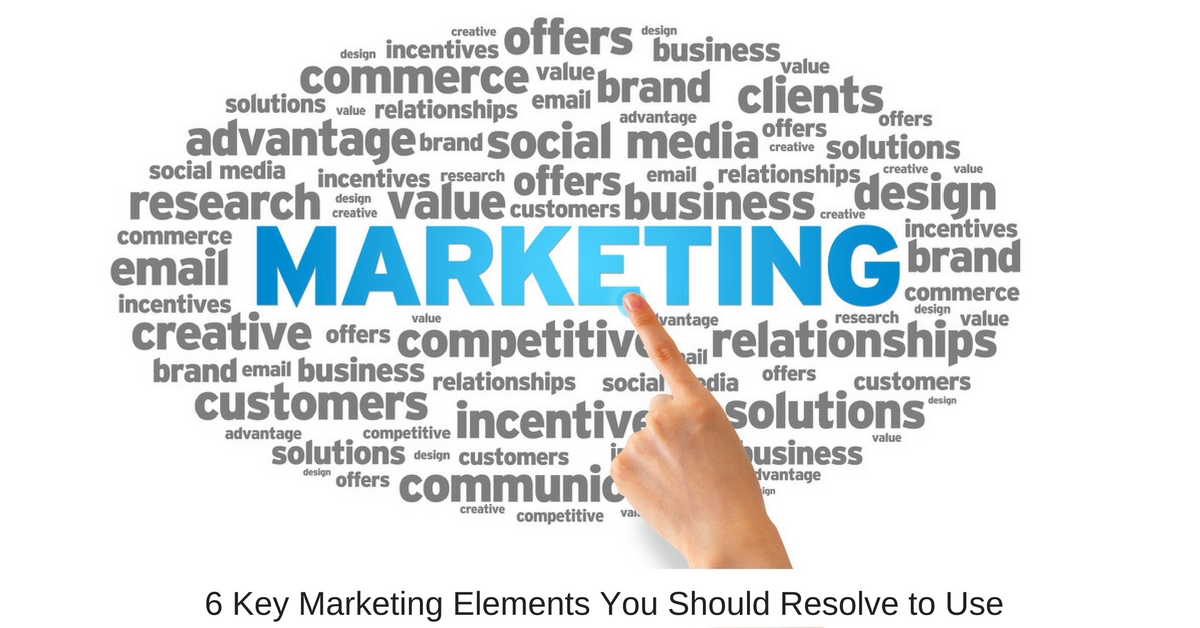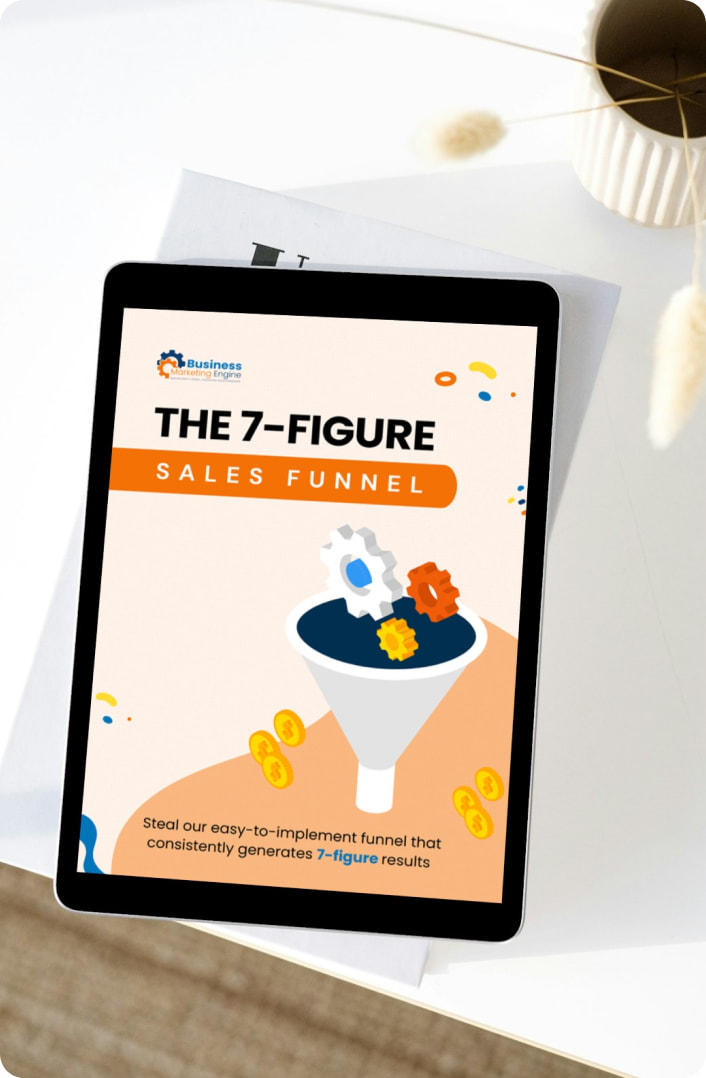With just slightly more than a month left in 2016, it’s time to start thinking about your 2017 plans, and the key marketing elements you’ll incorporate to increase your efficiency and create content that gets results for your business. Resolve to start taking action on each of these elements today, build them into your plan, and you’ll save time and money while creating positive growth for your business.
What Do You Want to Accomplish?
The end goal of marketing in all of its variations is to promote your product or service in such a way that your business sees a positive result, including:
- Higher sales and greater overall profits;
- Increased brand awareness; and
- Long-term customer retention.
A quick Google search shows hundreds of articles detailing the key elements of a successful marketing plan: some have the four Ps (product, price, promote, and place), while others create lengthy lists that tell readers how to create a successful and strategic marketing plan.
I briefly talked about it here in terms of your marketing goals, but it really holds true for any key element you include in your marketing plan. Making sure your marketing plan components meet each of these three criteria will help you achieve success and focus your resources on results-producing activity.
- Measurable: Everything you do should be measurable. You should be able to assess and analyze your data, and be able to put definite and clear growth and improvement expectations as your goal. When you look back at the actions you took, you should be able to find how exactly how successful your program was. For example, many marketers will incorporate A/B split testing to see what decisions they’ve made or steps they’ve taken have generated results from their target audience. Whether it’s the color of the call-to-action button or the language used in landing page headlines, A/B split testing lets you see, numerically, which option has resonated more with your audience.
- Manageable: Your activities should all be manageable — don’t put anything in your marketing plan that is outside your company’s capabilities. You could be setting yourself up for failure when you put unrealistic expectations on your department, team members, and on yourself. This doesn’t mean, though, that you shouldn’t put yourself. Think of it in terms of weight lifting. If you’ve done a back squat at 150 pounds, trying to squat 300 pounds isn’t realistic or manageable. You’ll likely have poor form and could injure yourself. If you choose 155 or 160 pounds, however, you’ve found a manageable growth expectation. It takes your measured maximum and increases your results without causing harm. The same happens with unmanageable marketing activities. If you’ve taken on the task of overhauling your Web site with new content, images, themes, and even hosts, it’s important to plan ahead and give yourself the time necessary to complete the task. Going live on an unfinished site can leave your visitors frustrated, and your co-workers irritated, and can damage the goals you’ve set for your Web site.
- Meaningful: Unless you like wasting time, each element of your marketing plan should be meaningful. In this case, meaningful activity is a step that gets you closer to reaching your goal. It will take the resources you have to invest and will amplify them. If you were to do A/B split testing on your new landing page, you’d want to make sure that the two options are already within the realm of reaching your target audience. Meaningful marketing elements should serve a purpose.
6 Key Elements of Marketing to Make Your Plan Stand Out
Each company’s marketing plan might look slightly different, as some companies may choose to focus on outbound marketing, like press releases and advertisements, while others choose to hone in on inbound marketing, including blogs, social media, and visual content. Either way, these general elements are applicable in any of marketing and can help you boost your efforts
1. Research
There are so many adages that speak to the importance of preparation before execution, and for good reason. Knowing the background of what you’re trying to accomplish before you set out on the task makes the entire process much smoother. To start your research, look at your own company and product first, to truly understand each aspect of its abilities. It’s much easier to market something when you have more details.
It’s also a good idea to look the alternatives presented by the competition. Your target audience will have to choose between your product or service and your competitors’ offerings. By getting a better picture of what they have to present, you will better be able to market the components of your own product that set you apart.
2. Target Audience with Customer Acquisition Cost
Even in the non-profit world, we spent a great deal of time researching and understanding our target audience. Marketing across any industry requires an understanding of who finds your product or service most appealing.
A few different components of determining your target audience can help you hone in even more to get the best message across.
Audience Segmentation
Once you’ve found your target audience, break the member categories down even further. Those who are religious might respond better to one aspect of your product or service than others, for example. Men and women will look at different facets of the same item and find benefits. Political differences, hobbies, and lifestyles should all play into your marketing plan.
As you segment your audience, you can create different messages that will be more appealing to each group. Look at social media. Facebook and Twitter are the two main players, and your marketing strategy should be different for each. One is better for building relationships and engagement while another is ideal for brand identity marketing. Consider the audience for the different platforms. Snapchat is appealing to a younger audience, while Pinterest catches the attention of women younger than 50 years old.
Survey Your Audience
If you really want to know what your target audience members want from your business, ask them. Companies are looking at the ways to best meet their customers’ needs, and surveys are becoming a popular way to do so. From the printed QR codes on the bottom of a receipt to an emailed link that opens in Survey Money or Wufoo, these surveys can be found on almost a daily basis. Some, like Chick-fil-A, Arby’s, and Dunkin Donuts, even offer free products in return for survey completion.
Analyze the Top and Bottom 20 Percent
You can find out more about your audience by looking at the best- and worst-selling products or services. Find out what your clients love and why to learn how you can expand on sales of those items. Likewise, knowing what isn’t selling as well as you’d hoped can help your company make long-term decisions. Is it not selling well because of marketing, or is there a deeper reason that lies in functionality?
The same goes for your customers. Find the commonalities in each group and learn more about the motives behind their purchasing decisions.
Customer Acquisition Cost
Across each different segment, it’s important to know the cost of acquiring each customer. To make your marketing plan work, you need to know your numbers. As Gabe points out, if you make $100 per each customer each year, and you have a one-year customer retention rate, “spending $50 per new customer is a good investment. Spending $150 per customer is a bad investment.” Knowing how much each customer brings in can help you determine how much you should spend to reach a customer.
3. Trackable Steps
From Google analytics for your Web site to custom short URLs in social media, marketing is becoming more and more trackable. Social media dashboards all have analytics and reports that can show you growth, popular posts, and organic reach.
Being able to keep tabs on your campaign in real time gives you the ability to change course. Start by checking on your campaign data each day and learning more about what the results are telling you. You’ll start to see what data and details you can extrapolate to achieve better results for future campaigns, and can determine which media type is the best for each type of message.
Familiarizing yourself with the data points and analytics reports before you launch the campaign will help you to become more efficient, so take five minutes today and start looking at one aspect of one of your analytics dashboards. Put in the time now to reap the rewards later.
4. Timeline, Owners, and Budget
This may seem to be common sense, but in big or busy teams, the details of who is doing what can get lost. Each component of your campaign has separate sub-steps that should be assigned out before the campaign takes place. Who will be responsible for writing and editing content? Who will be designing the content? Who will create invitation lists for events, and who will send the invite to the designated recipients? Break down your larger campaign goals and elements into the individual tasks, and assign them to individuals involved in the campaign.
Before you launch the campaign, you should also prepare a budget. This will help you stay on track and know how much you can spend while projecting a reasonable ROI. This should include the number of prospects you expect to reach while factoring in the customer acquisition cost.
5. Valuable Content
While your plan might not be centered around content marketing as a whole, each element you incorporate will require content. From a well-written, enticing press release that attracts the attention of your local newspaper to an in-depth white paper that shows customers the value of your product or teaches them how to perform a specific task, the content you present will be the key to reaching your customers.
- Write content that is compelling and engaging. It should catch the attention of your readers and draw them in, encouraging them to take the next step toward becoming a customer.
- Give your audience members clear calls to action, letting them know exactly what you want them to do. Provide links to get to the next step, with a clickable link, a bold button, or something that is easy to share.
- Consider using infographics to present extensive amounts of information. Visualized articles are great for long pieces of writing while useful bate is something that is highly shared. Visual content as a whole is an area to watch in 2017, so incorporating these strategies now can set you apart.
6. Review and Analysis
Your marketing plan should always include a time to review and analyze the results of each campaign. This will help you get a better picture of what worked in your last campaign. Once you know the successful elements and the pieces that didn’t meet your goals, you can tweak your future campaigns. Each time, you’ll learn more about your audience, your product or service, and your strengths and weaknesses. Over time, you’ll develop a strong plan with effective key marketing elements and proven results.
Putting together a successful marketing plan involves more than successful campaigns. It requires thoughtful, well-prepared strategic methods that involve key marketing elements. Doing your homework and research, preparing yourself for success by putting together different messages, and assigning your tasks before the campaign launches will give you the framework for an effective campaign and overall marketing plan. Once the campaign has launched, staying on top of producing quality content, watching the numbers and reports throughout the campaign, and taking the time to review your results will prepare you for the future.
Do you agree with these key marketing elements? What would you include as a must-have for a successful marketing plan? I’d love to hear your top tools in the comments below.
If you’re looking for practical, real-life ways to incorporate these six key marketing elements into your company’s big picture, we can help. Contact us today for a free consultation.










